 Smiley Smile (1967)
Smiley Smile (1967)
purchase from Amazon
View Smiley Smile however you want — either as a half-baked, scaled-down version of SMiLE or as its own creative statement. Either way, it’s a huge bummer. Of its 11 songs nearly half of them are SMiLE leftovers, only stripped of most of their original production flourishes. “Vegetables” and “Wind Chimes” in particular, while still retaining some of their charm, are largely neutered here. “Heroes and Villains” at least sounds somewhat like it was originally intended, but it can’t match the former version’s sheer ambition.
Of the new songs recorded for Smiley Smile, “Gettin’ Hungry” is an aimless mess credited just to Brian and Mike while “With Me Tonight” boasts excellent vocals that are nearly undone by a tepid, uninspired arrangement. The less said about “She’s Goin’ Bald” the better. In a clear sign of panic, Capitol insisted that “Good Vibrations” be included on the record despite having already been out for almost a year. It did little to help Smiley Smile‘s commercial fortunes, and the album topped out at #41.
With the Beatles already having answered Pet Sounds with Sgt. Pepper’s Lonely Hearts Club Band, time and popular success now seemed increasingly to be passing the Beach Boys by. Smiley Smile did not help that at all. Carl Wilson is on record (in the liner notes for the CD re-release no less) as calling the album “a bunt instead of a grand slam.” I’d say it’s more like watching a batter get plunked in the head with an errant fastball.
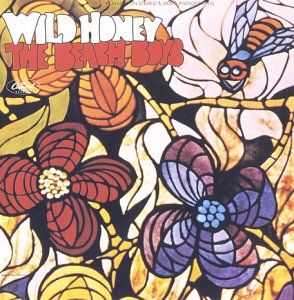 Wild Honey (1967)
Wild Honey (1967)
purchase from Amazon
Now this is an interesting development. Seemingly out of nowhere, the Beach Boys discover soul! Well, R&B anyway. The group, for the first time in years, recorded as a band again and damn if they didn’t put out a surprisingly fun and consistent album in Wild Honey. While the production (credited to the entire band) is not a whole lot better than Smiley Smile, the songs and arrangements are a vast improvement. The opening title cut, replete with theremin, was recorded in just two days (imagine that!) and is a huge breath of fresh air.
Carl turns in an effective vocal performance on a cover of Stevie Wonder’s “I Was Made to Love Her” that certainly didn’t eclipse the original but was no slouch either. Other highlights are the subdued and slightly downcast “Country Air” and “Let the Wind Blow,” each of which actually benefits from the scaled down production. “How She Boogalooed It” is also ridiculously fun and bouncy, and a bit of a stylistic callback to the group’s surfing salad days.
The only real attempt to swing for the fences, “Darlin’,” was ironically almost given away to the band that would become Three Dog Night. Good thing that didn’t happen, as it provides one of the last glimpses of Brian’s quickly fading songwriting and production genius.
 Friends (1968)
Friends (1968)
purchase from Amazon
Despite clocking in at one minute longer than Wild Honey, Friends feels a lot slighter. That’s not a knock on the material, mind you, as Friends is a minor gem in the group’s extensive catalog and remains sorely overlooked. The title track, a pop waltz credited to the entire group except for the newly official Bruce Johnston, is just so damn pleasant and earnest. “Be Here in the Morning” mines the same territory and is almost as good. The other contender for best track is “Busy Doin’ Nothing,” an elegantly understated song that is frustrating to hear because you know Brian could’ve turned it into a masterpiece if he wanted to.
Friends is without a doubt the most democratic album the Beach Boys had released to date. The problem is that without Brian’s dominant creative vision guiding the band, there was little sense of purpose to the proceedings. It’s not aimless by any means, but too much of the group’s output from this period feels like demo material rather than fully formed songs meant for public consumption. Many of the numbers — “When a Man Needs a Woman” and “Meant for You” just to name a couple — don’t begin or end so much as they just drift in and out.
Of note here are a pair of compositions from Dennis Wilson (and poet Stephen Kalinich), “Little Bird” and “Be Still.” While neither is earth-shattering they do point toward Dennis’ maturation as a songwriter in the years to come. His artistic development, after so many years in the background, was one of the few bright spots for the band during their time in the desert.
Any momentum the band hoped to build on from Wild Honey was lost with Friends, which peaked at #126 on the U.S album chart. A supporting tour — featuring Transcendental Meditation guru Maharishi Mahesh Yogi — was a disaster.
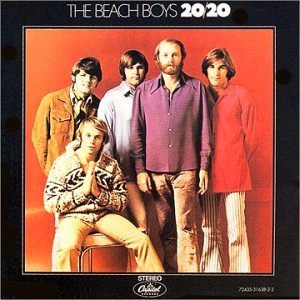 20/20 (1969)
20/20 (1969)
purchase from Amazon
There’s a little more meat on the bones here, but the Boys are still struggling to fill the void left by Brian’s increasing absence. The first side is nothing but win, however. Leadoff track “Do It Again” is a gem and a hopeful sign for the rest of the record, which would be the group’s last for Capitol for almost 20 years. Then there’s a strong duo of cover songs — Phil Spector’s “I Can Hear Music,” which features some of Carl’s finest lead vocal work, and the rocking and vital-sounding “Bluebirds Over the Mountain.”
Dennis steps out of the shadows even more on 20/20. Listen to the gorgeous orchestration on “Be With Me” and tell me he’s not growing big time here. Or for that matter, the balls-out rock on “All I Want to Do,” in which Mike Love sings like a man possessed. Finally, Bruce Johnston gets in on the act with his own Pet Sounds-ish instrumental, the pretty “The Nearest Faraway Place.” It’s a tad cloying but that’s OK.
Side 2 is more of a mixed bag. Al Jardine’s cover of “Cotton Fields (The Cotton Song)” was rendered rather toothless by Brian’s production (in Al’s mind anyway), so he recorded a new version later in the year that became an international hit. The rest of 20/20 was largely Brian’s work. The best of the bunch is “Time to Get Alone,” a waltz originally intended for Redwood, the forerunner of Three Dog Night.
The album ends, oddly enough, with a pair of SMiLE tracks — the soaring, angelic “Our Prayer” and the ambitious “Cabinessence,” the latter of which contains the infamous Van Dyke Parks lyrics (“Over and over / the crow cries uncover the cornfield / over and over / the thresher and hover the wheat field”) that led to a showdown between Parks and Mike Love, with the result being Parks’ abandonment of SMiLE. Its hard to argue against the songs’ brilliance, but they do not belong on this record.
 Sunflower (1970)
Sunflower (1970)
purchase from Amazon
The Beach Boys began the ’70s with a new label (Mo Ostin’s Reprise) and a determination to reverse their flagging commercial fortunes. While Sunflower failed to accomplish that (peaking at #151 in the U.S.), it stands as the definitive post-Pet Sounds Beach Boys album. The one-two punch of Dennis’ rollicking “Slip on Through” and Brian’s “This Whole World” is as strong an opening pair as you’ll find on a pop album.
The entire band sounds energized on Sunflower, and everyone (with the possible exception of Al Jardine) turns in killer material. You want lush, dreamy pop? Enjoy “Add Some Music to Your Day,” “Deirdre,” and “Our Sweet Love.” You say you prefer to rock out instead? Have a helping of “Got to Know the Woman” and “It’s About Time.” You want a little of that SMiLE-era experimentation? Album closer “Cool, Cool Water” has you covered there too.
The bottom line is this — while the Boys still had quality music left in them throughout the 1970s, Sunflower is the last uniformly excellent album they released. It is the album you can point someone to when they remark that the band offered nothing but cute little ditties about cars and waves.
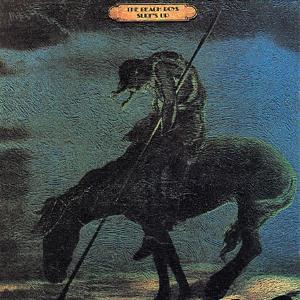 Surf’s Up (1971)
Surf’s Up (1971)
purchase from Amazon
Surf’s Up fails to measure up to Sunflower only because the songs are not great across the board, but there’s still a lot to love. The lead track, an environmental awareness number called “Don’t Go Near the Water,” showcased the band’s newfound social awareness (credit new manager Jack Rieley for that direction). Fortunately the arrangement is strong, because the lyrics are about as subtle as a kick in the nuts (“Toothpaste and soap will make our oceans a bubble bath / So let’s avoid an ecological aftermath / Beginning with me / Beginning with you”).
Some of the other high points on Surf’s Up are a pair of strong Carl compositions, the spiritual affirmation of “Long Promised Road” and the trippy “Feel Flows.” Bruce Johnston’s lone contribution is “Disney Girls (1957),” which is unrepentant in its nostalgic mawkishness but with bridge group vocals to die for. Lastly there’s a pair Brian Wilson gems — the beautiful and sad “‘Til I Die,” a clearly autobiographical number that reflects his fragile emotional state, and a reconstructed and resurrected version of “Surf’s Up.” The latter is yet another artifact from SMiLE, which continued to cast a shadow over the band half a decade after the fact.
Sounds pretty good, yes? Well hold on just a minute. I cannot award full credit to any album that contains songs like “Take a Load Off Your Feet” or “Student Demonstration Time.” The former is a cheesy novelty track via Brian and Al Jardine, while the latter is Mike Love’s reworking of the Leiber/Stoller R&B classic. Love’s attempt to cast himself as a politically charged commentator falls completely flat here.
While Surf’s Up is still very strong it is a step down in quality from Sunflower. Still, that didn’t stop it from becoming the band’s first Top 40 album since Wild Honey.
 Carl and the Passions — “So Tough” (1972)
Carl and the Passions — “So Tough” (1972)
purchase from Amazon
And just like that, more change comes to the Beach Boys. First, Dennis was sidelined with a hand injury, so Carl brought in South African drummer (and future Rutle) Ricky Fataar. Fataar in turn brought guitarist Blondie Chaplin with him. As this new lineup began recording the followup to Surf’s Up, Bruce Johnston had a falling out with manager Jack Rieley and either quit or was fired.
So the lineup of Carl Wilson/Mike Love/Al Jardine/Ricky Fataar/Blondie Chaplin (Brian co-wrote a few songs and sang some backup vocals but was largely absent) forged ahead. The resulting album, Carl and the Passions — “So Tough”, is solid but rather unremarkable. The instrumental performances are as accomplished as anything since the Wrecking Crew days, but there is very little of the trademark Beach Boys sound present. This sounds more like a decent Doobie Brothers record than a true Beach Boys offering. By the time it’s over, you’re left scratching your head and wondering what the point was.
If you want some songs to cherry pick here, go for the gospel-tinged “He Come Down” and a pair of Dennis Wilson/Daryl Dragon (yup, the Captain) collaborations — the soaring “Make It Good” and the aching ballad, “Cuddle Up.”
 Holland (1973)
Holland (1973)
purchase from Amazon
By contrast, Holland does a better job of assimilating the new guys into the group’s sound. Chaplin’s lead vocals on “Sail On, Sailor” are but one of the track’s high points. From there, unfortunately, the rest of Holland is rather uneven. The Dennis Wilson/Jack Rieley number “Steamboat” is an unheralded treasure, although I can see why fans of the time might have been weirded out by it.
Elsewhere, the three-part “California Saga” is almost sunk completely by the heavy-handed, spoken word parts of the middle section and only partially redeemed by the backward-looking arrangement of the final part.
The rest of Holland, like the album that preceded it, is competent but just doesn’t feel like a Beach Boys album. It’s as if the group (at this point under Carl’s leadership) is intent on forging a new sound, but there is little joy to be found in this updated Beach Boys. The songs are fully formed — unlike a lot of the output from the Friends era — but they tend to meander and in the end are just… there. “Leaving This Town,” for instance, is nice enough but just plods along for nearly six minutes.
All this is to say nothing of what was originally included as a bonus EP with Holland — Brian’s six-song Mount Vernon and Fairway (A Fairy Tale). Brian wanted it to be the centerpiece of the album, and was once again rebuffed by the group. In this case, they were absolutely right. It’s half-baked and completely pointless, and clearly Brian was in a bad way by this time. Narrated by Rieley, it sounds like a children’s audio book on acid.
The Beach Boys in Concert (1973)
purchase from Amazon
This was the second official live release from the Beach Boys, and a vast improvement over the superfluous Beach Boys Concert. It’s an excellent live document of the Beach Boys at the tail end of their early ’70s live renaissance. This is as good a case as you’ll hear for the potency of the Chaplin/Fataar era (much better than the preceding two studio albums at least), thanks to fine performances of contemporary cuts like “Sail On, Sailor” and “Darlin'”, as well as super-charged takes on classics like “Help Me, Rhonda” and “Fun, Fun, Fun.”
 15 Big Ones (1976)
15 Big Ones (1976)
purchase from Amazon
By 1976, just 15 years into their career, the Beach Boys were entrenched as an oldies act. The 1974 Capitol compilation, Endless Summer, featured all pre-Pet Sounds music (save “Good Vibrations” on the CD edition Capitol released in the 1980s) and was a colossal hit. They began playing to packed arenas for the first time in years, but it was at that point that America basically declared, “Yeah, it’s great that you’re still releasing new music, but we wanna hear “Little Deuce Coupe” again.”
It’s within this context that the Boys’ first new studio in three years, 15 Big Ones, was released. Brian was back in the producer’s chair, but was really only interested in doing an oldies album. Carl and Dennis wanted to keep doing originals. In the end they compromised, and the album was nearly split between covers and new material. It was well-received by the record buying public, and I can see why. It sure sounded like classic Beach Boys. But peel away the layers and the album is not all it appears to be.
The are two major problems with 15 Big Ones. For one, the cover songs are crap. They’re over-processed golems that resemble the originals, but have absolutely no spark. Witness the album opener, a turgid rendition of Chuck Berry’s “Rock & Roll Music.” The second problem is that Brian, although ostensibly “back,” is a shell of his former self. Listen to him croak on “Had to Phone Ya,” “That Same Song,” and “It’s OK” and hear just how ravaged his once angelic voice had become (he’s the third lead in, by the way). I would’ve bet money that this was Dennis on lead.
Honestly, it’s great that the band was able to gain new life after all they had gone through years leading up this album, but time has not been kind to 15 Big Ones.
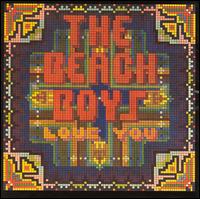 Love You (1977)
Love You (1977)
purchase from Amazon
A lot of reviewers and fans herald Love You as a return to form for the Beach Boys and Brian Wilson in particular. And yes, there are glimpses of old glory spread throughout this album’s fourteen tracks. Hidden behind some lyrics that are puerile even by Beach Boys standards are some legitimately good melodies and energetic vocal performances. Brian at half-speed is still better than 90% of the world’s songwriters.
But let’s be honest here — this is not Pet Sounds Volume 2. Hell, it ain’t even Surf’s Up Volume 2. If Mike Love had been the principal creative force behind Love You instead of Brian, people would be lining up to blast it. There’s just no charitable way to describe tossed-off junk like “Johnny Carson” or “Ding Dang.” And don’t even get me started on songs like “Solar System,” which are not only below par but feature lead vocals from Brian that further demonstrate just how shot his voice was by 1977. Kids, drugs are bad, mmkay?
Still, it’s not all bad. “Let Us Go On This Way” and “Honkin’ Down the Highway,” both of which sport a rather distinctive synthesizer sound, have the breezy and fun feel of classic Beach Boys even if they’re not exactly timeless. “The Night Was So Young” and “I’ll Bet He’s Nice” would have fit on an LP like 20/20. “Let’s Put Our Hearts Together” is of historical interest because it’s a duet between Brian and then-wife Marilyn (mother of Carnie and Wendy).
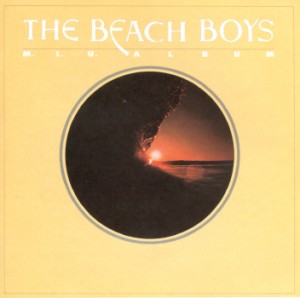 M.I.U. Album (1978)
M.I.U. Album (1978)
purchase from Amazon
M.I.U. Album marked the end of the Beach Boys’ contract with Reprise, and they would begin releasing albums via CBS Records the following year. Conventional wisdom holds that M.I.U. Album is an abomination, but I just don’t buy into that. While none of the material is transcendent, it’s surprisingly consistent musically (the lyrics are another matter entirely).
“She’s Got Rhythm” leads off the album in an endearing way, and even the Al Jardine-led cover of “Come Go With Me” is decent. It’s certainly more respectable than any of the covers on 15 Big Ones. “Kona Coast” is shockingly good, even if it is a clear example of Love and Jardine trying desperately to stubbornly recreate the classic Beach Boys surf vibe during the age of punk and disco.
I avoided this album for years based solely off its bad reputation, and now I wish I hadn’t. No, this is not essential listening, but as latter-day Beach Boys albums go I can’t find major fault with it. Even the lesser tracks don’t hit the same lows as the worst material of the post-Surf’s Up period. (I will not listen to anyone who slams “Belles of Paris” or “My Diane” and yet defends “Roller Skating Child.”) It also helps that the production isn’t nearly as dated and cheesy as on Love You.
 L.A. (Light Album) (1979)
L.A. (Light Album) (1979)
purchase from Amazon
Let’s welcome back Bruce Johnston, who was called in to co-produce after it was clear that Brian was sinking back into a psychological haze. Thanks to Johnston and fellow co-producer James William Guercio, L.A. (Light Album) sounds nice, if not quite inconsequential.
Opening track “Good Timin'” just barely scraped the Top 40 in the U.S., and is rather forgettable. Al Jardine tries to get all high and arty with “Lady Lynda,” which appropriates J.S. Bach of all people. Of note are two Dennis Wilson tracks that were recorded for his second, never-released solo LP Bambu — “Love Surrounds Me” and “Baby Blue.” They’re a tad dreary and muddled, and not nearly as strong as his work on Pacific Ocean Blue.
Oh yeah, did I mention that there’s a ELEVEN-MINUTE DISCO SONG on this record? Because there totally is. If you thought that “Here Comes the Night” from Wild Honey was good but just needed a dance beat and an extra nine minutes of running time, then brother are you in luck. Otherwise you’ll probably just conclude like me that the Beach Boys reached their most desperate, out-of-touch point on this song.
 Keepin’ the Summer Alive (1980)
Keepin’ the Summer Alive (1980)
purchase from Amazon
If there was ever a good chance for a band to seize the opportunity a new decade offered and revitalize themselves, it was the 1980s for the Beach Boys. Instead, they just continued to tread water on Keepin’ the Summer Alive. The music here approximates the Beach Boys for the most part, but there’s no reason for anyone to listen to this over any of their classic material. The opening title track is decent, but “Oh Darlin'” is very vanilla.
Elsewhere, Mike Love records some of his worst vocals on “Some of Your Love,” while the group serves up yet another pointless remake courtesy their turgid take on Chuck Berry’s “School Day (Ring! Ring! Goes The Bell).” It’s not a completely lost cause, as “Goin’ On” and “Endless Harmony” both sport some of those sweet vocal dynamics that only the Beach Boys could deliver.
Mainly, though, Keepin’ the Summer Alive was just another in a growing string of albums that did usually accomplished little more than to remind you of what the Beach Boys once were. It also marks the end of Dennis’s time in the band – other than a drumming credit on “School Days,” he is completely absent from the album, and would never again participate in a Beach Boys recording session.
 The Beach Boys (1985)
The Beach Boys (1985)
purchase from Amazon
Five years passed between Beach Boys studio albums, by far the longest stretch in the band’s history to date. In the interim, Dennis Wilson died in December 1983 in an accidental drowning. The band, however, was enjoying another resurgence in touring popularity. They became firmly entrenched as a Reagan-era symbol for an idyllic, bygone America and performed in front of massive crowds eager to hear the classics of their childhoods.
In the midst of this spike in popularity, the group brought in Culture Club producer Steve Levine to help record a new album. The Beach Boys, featuring contributions from the entire band (including Brian, now firmly in the control of Dr. Eugene Landy), peaked at #52 in the U.S. and was their final record for CBS. There is no mistaking the record for anything but a pop album from the mid ’80s. From the gated drums to the synths, it has all the sonic trappings of the era.
Unfortunately what it doesn’t have are great songs. I can’t say that there’s anything that’s out and out bad on the record, but it all just sounds rather tired. Every song is calculated to make you recall the band’s better material. Actually I take that back. “Male Ego” is just horrible.
 Still Cruisin’ (1989)
Still Cruisin’ (1989)
purchase from Amazon
Against all odds, the Beach Boys returned to the top of the charts in 1988 when the ubiquitous “Kokomo” took everyone by surprise. It was their first #1 single in America since “Good Vibrations” in 1966, the longest span between #1 singles for any band. Not surprisingly, the band jumped at the chance to capitalize on their good fortune, so they returned to Capitol Records and released Still Cruisin’.
To call this release cynical would probably be charitable. Of its ten songs, six had already been released on other movie soundtracks (including “Kokomo,” from Cocktail). “Somewhere Near Japan” is alright, “Island Girl” is completely forgettable, while “Still Cruisin'” is a total steaming pile. And I’d be remiss if I didn’t mention “Wipe Out,” which crosses the line from bad to offensive. The cover is lame enough as it is, but throw in a guest appearance from the Fat Boys and I take back what I said about the disco version of “Here Comes the Night” being the band’s nadir.
Summer in Paradise (1992) & Stars and Stripes, Vol. 1 (1996)
don’t purchase from Amazon
Look, I try not to be one of the many rabid Mike Love bashers out there. Regardless of how you view his conduct over the years, or all the legal battles he’s been involved in with his own family, he’s a major part of the Beach Boys story and deserves to share in the band’s awesome legacy. But there’s simply no charitable way to describe an album that even completists can feel safe passing up.
From the cringe-inducing, self-referential lyrics of “Summer in Paradise” to Love’s Creepy Old Man persona on “Summer of Love,” Summer in Paradise is an embarrassment. Correction — thanks to the inclusion of “Forever” (yes, the same one written by Dennis Wilson on Sunflower) as sung by John “Uncle Jesse” Stamos, Summer in Paradise is an abomination.
Stars and Stripes, Vol. 1 at least has the novelty angle going for it. It’s really a covers album, but with the Beach Boys supplying background vocals for a host of country music stars. Yes, country. The best thing I can say about the album is that it’s not all that bad and it is certainly well-produced. It’s just not all that necessary. Even Willie Nelson’s reading of “The Warmth of the Sun” feels a bit empty, and that should’ve been a slam dunk. How the group convinced Brian to take part in this I’ll never know.





Comments